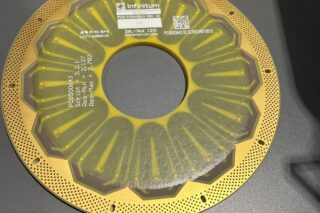In aerospace and defense, delivery has long been a strategic priority. This trend has only intensified in 2025 and will continue to do so in the coming years. Manufacturers must deliver faster, innovate more, all while maintaining high standards of quality, safety, and compliance. Marc Rivière, Strategic Advisor for A&D at PTC shares his insights.
This challenge is inherently complex: in A&D, every aircraft is unique, logistics constraints are numerous, and even the slightest non-compliance can halt an assembly line. I personally believe that digital thread can positively impact ramp-up efforts.
Industrial Sovereignty as an Accelerator?
I won’t start by discussing product design, IT ecosystems, generative design, or document management… Instead, I’d like to focus on a hot topic: industrial sovereignty. With the uncertainty surrounding tariff policies, many European companies are considering reducing dependence on the United States.
In this context, industrial relocation or reshoring makes even more sense. By bringing production sites closer to operational needs, manufacturers can strengthen their sovereignty while significantly increasing production capacity. This dynamic could pave the way for more responsive, agile, and integrated manufacturing chains.
Germany serves as an inspiring example: with its emergency defense programs, the country now has to build almost everything from scratch. However, it can rely on a solid industrial base through a process of industrial transfer. This type of transfer—from a mature manufacturing sector like automotive to strategic segments—could become a viable business model. But for it to work, a robust digital backbone is essential. Only this will allow for the pooling of expertise, absorption of increasing system complexity, and, most importantly, reduction of development cycles.
What if France started thinking this way too?
Read Also
Thinking in Terms of an Open Ecosystem
Ramp-up isn’t just about producing more—it’s about producing better and faster.
In aerospace and defense, simply duplicating a site or process isn’t enough to scale. It requires orchestrating a complex network of actors, machines, software, and data, often spread across continents, within a context of sovereignty, strict regulations, and resource constraints.
Some programs require a unified digital modeling chain. Every stakeholder must work on common, integrable, and traceable models. For example, a parts supplier must be able to access the latest CAD models to synchronize specifications. On the engineering side, it’s about simulating the impact of a change without waiting for numerous approvals. There’s also the need for real-time tracking of a critical part’s progress through various production stages.
Clearly, ramp-up can gain new momentum if industry players establish smooth digital collaboration, based on shared standards and robust interoperability rules. This also represents a major cultural shift: having the courage to share critical data with partners while protecting intellectual property.
And Doing It All in Real Time
In the real world, perfect plans don’t exist. The complexity of an A&D program means that responsiveness often determines delivery quality. That’s why deviation detection and resolution must be nearly instantaneous. During the A350’s development, Airbus implemented strict quality gates at every development milestone. These checkpoints ensured that each subsystem (a part, a system, a software code…) met requirements before moving to the next stage.
Today, this validation logic extends across the entire value chain, incorporating:
- Document management
- Technical and contractual validation workflows
- Non-conformity and waiver handling processes
- Supplier quality monitoring
- And field feedback loops…
This level of real-time rigor is only sustainable under one condition: all systems (PLM, ALM, databases…) must communicate with each other. If a machining defect is detected on a critical engine part, it must be possible to instantly identify the 3D model version, the embedded software code lines, and other impacted parts. This responsiveness is made possible by digital thread.
Embracing Digital Thread to Scale Up
Today, talking about ramp-up in A&D means fully committing to a digital thread to increase production capacity. Scaling up while ensuring quality and compliance requires more open and integrated digital collaboration. It’s truly the recipe for boosting industrial performance.
The digital thread is the very foundation of our strategic autonomy and industrial performance.






![Image [BUYING GUIDE] How to Choose the Right Industrial Robot?](/wp-content/uploads/sites/3/Industrial-Robot-320x213.jpg)

![Image [Buying Guide] How to Choose the Right Safety Shoes?](/wp-content/uploads/sites/3/Safety-Shoes-320x213.jpg)


![Image [Buying Guide] How to Choose the Right AMR?](/wp-content/uploads/sites/3/AMR-320x213.jpg)